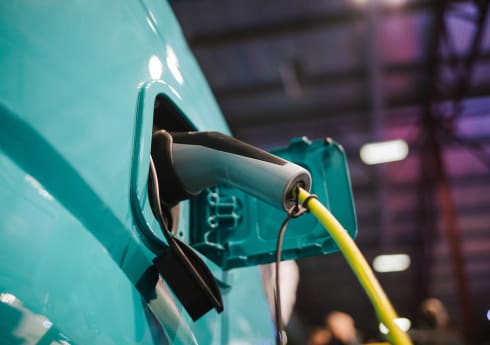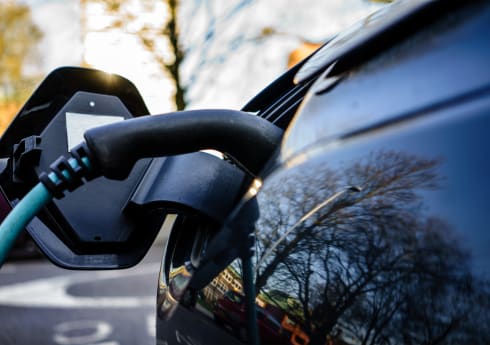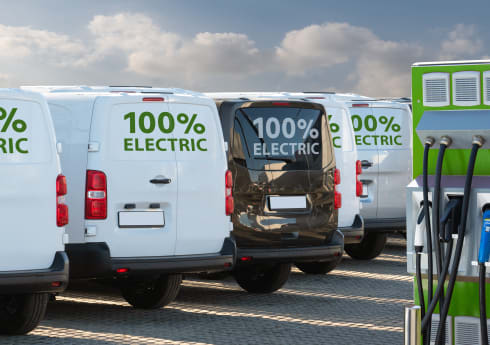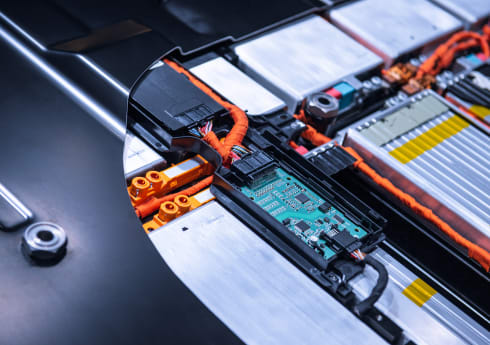EV Battery Charging Best Practices for Businesses
You’re not powerless when it comes to protecting your fleet’s EV battery life. With some canny tactics, you can make electric vehicle charging points work for you.
That’s why we’ve put together a list of EV battery charging best practices, including tips on picking the best charge points and not rushing your charges. Read on for top tactics!

5 EV battery charging best practices for your fleet
Electric vehicles offer an exciting new opportunity for business fleets and day-to-day drivers. But the fact is a lot of EV drivers do harm to their EV battery life through bad maintenance.
The lithium-ion in EV batteries will degrade if you’re not careful with charges.
Let’s get straight to it, then! Here’s how you cut all that out to make sure your electric vehicles are at peak battery performance.
1. Follow the leading charging advice
Okay, EV battery charging best practices show you should:
- Charge your EV battery when it hits 10%.
- Recharge up to 80%.
That’s the optimum rate to preserve your EV battery life.
2. Limit the extreme state of charge
Okay, what does that mean? State of charge (SOC) is battery life for any product, like on your laptop. If your laptop is at 35% battery you’ll soon be thinking about plugging it in so you can continue watching the Game of Thrones prequel.
EVs have battery management systems that block the battery from charging, or discharging, at peaks and lows. Like if you’re maxing out your charge to 100% because you’re convinced it’ll go to 101% and get you some extra mileage.
It’s a sound idea to keep the state of charge of your EV at a sensible level from 0-100% as it can improve the overall lifespan of your battery (and your EV’s general performance).
Yes, it’s tempting to charge right up to 100% for the maximum mileage if you’re having issues with range anxiety. But it’ll do your EV battery life no good in the long-term.
3. Limit fast charging your EV
Does rapid charging damage an EV battery? Yes. Plain and simple.
But, okay, we get it. If your battery is super low and you’re there with a fast charger option… chances are you’re going to use it. Temptation overload, right?
However, using a fast-charging option presses a huge amount of current into your EV battery in an ultra-short period. EV battery degradation with fast-charging is a real issue you need to be aware of.
The stats show if you use standard charging over eight years, it’ll add 10% more lifespan to the battery and keep you moving for longer.
4. Manage battery state during downtime
Don’t park your EV up with an empty or full battery. That may seem like a logical step to do the opposite, but it degrades your EV battery life.
You can get a timed charger to help with managing your downtime charging. For example, if you arrive home with your EV at 70% and plug it in overnight… it’ll sit charging at 100% needlessly.
But with a timer, you can make the charging stops when the state of charge is at, for example, a healthy 80%.
5. Park sensibly to limit exposure to extreme temperatures
To preserve battery life during hot weather, don’t just park it up at the peak of summer in the middle of the day.
It’s not good for your vehicle anyway, but automated temperature control systems on your EV can then drain your batteries while they battle to cool down your vehicle.
Best bet? Park your EV in the shade where it’ll be cooler than cool. You can also adjust your settings so its thermal management only uses grid power.
iCompario tip: Take control of EV charging with a range of charge points
Take full control of your EV charging with a range of electric vehicle charging points. Install units at your workplace or for commercial reasons.
With stations added at convenient locations, you can ensure you’re always charging your fleet of vehicles with the best EV battery charging best practices. Preserve your EV battery life and stay on the road for longer. Compare the market for free to find your best match.
Best charging practices for workplace charging stations
Getting set up with a charging point is the first step to using the EV battery charging best practices. But each station needs a different approach. Here’s a breakdown!
Workplace charge points
If your business wants to offer workplace charging points, this puts you in a position to make sure all EV owners follow best practices.
You can also pick the optimum spot for the stations, which ensures you can meet the needs of employees who can’t have charge points fitted. Or for staff with plug-in hybrids or range-extended EVs.
This affords you the opportunity to choose stations that:
- Are in shaded areas out of direct sunlight (ideal for the summer months).
- Have plenty of room to allow unobstructed charging.
Your business can also distribute emails, or leave signs near the installed stations, displaying details on the EV battery charging best practices. Want to get started? All you need to do is compare the market.
The losses during EV battery charging
Losses during EV battery charging are another thing to consider with your best practices for battery life.
EV battery charging efficiency isn’t perfect. When you charge your electric vehicle, the amount you add isn’t equal to the energy available. That means your EV can use from 12%-15% more energy than what you charge up.
Why does that happen? Where does the energy go? Well, it can depend on:
- Energy conversion to heat.
- Some is used to maintain battery temperature.
- More goes to transmission loss.
Even if you have a 70kWh+ battery with an EV, it won’t charge from zero to full with exactly 70kWh. You have to charge more power than the vehicle receives.
This energy loss may be upsetting for the more eco-friendly drivers out there, but it’s nothing compared to the pollution diesel and petrol cars create. You can still rest easy on that front.
However, it’s a complex area. If you’d like to know more, we have a complete guide to losses during EV battery charging to guide you through the issue.
What’s the best way to charge an EV battery?
The best way to charge your EV battery is to use standard charging and maintain the state of charge between a healthy 50%-80%. It is, in fact, best to charge from 10% up to 80%.
Here are the key tactics for the best charge in quickfire form:
- Follow industry guidelines of charging from 10%-80%.
- Aim to keep your EV between 50%-80% of battery state of charge.
- Limit fast-charging in favour of standard charging.
- Don’t max out your charges to 100%.
- Try to avoid your EV battery going flat at 0%.
Using home EV charging points is arguably the best choice for you.
It’s a cost-effective option as you charge on a lower electricity tariff, it’s convenient and you get total control over how long you charge the vehicle for.
Can you charge an EV with a portable battery?
You can indeed. But you will need an EV-specific portable charge. You can’t just plug any old thing into it and hope for the best.
You’ll likely see more of these in the EV battery news. There are models on the market, such as the brand ZipCharge’s GoHubs. Charging EVs with a portable battery is still a pretty new area to the market, but at the very least it’ll mean you have a backup power supply handy for your fleet.
Whether these potable chargers will revolutionise the market remains to be seen.
iCompario tip: Use charge cards to limit range anxiety
The worst things fleet owners can do is send EVs off out across the UK with little idea where they can next charge up. You can simplify your wider charging needs with a simple solution—EV charge cards.
Hand these out to your drivers and they have immediate access to 100s of charging stations within a network across the country. And they can charge, and pay, at these stations. It really takes away those range anxiety concerns.
Take control of your EV charging
Ready to get set up with EV charge points? Find the best match for your business on the UK market with our free comparison tool:
- Enter your business details.
- We’ll compare the market.
- You get best match recommendations.
Comparing the market saves you time and money. It also sets you up with the best deal on the market to match your EV needs.



